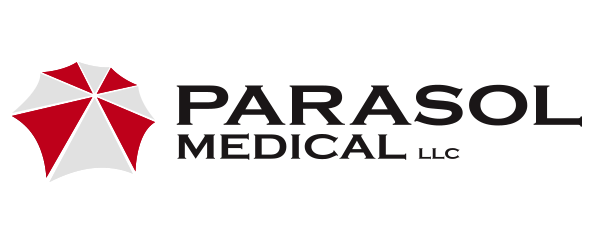What is the True Cost of a Fall in a Healthcare Facility?
Why patient falls prevention should be a top priority
What’s been stopping you from implementing or improving your falls reduction program? Are you concerned about how much it might cost to put a falls management system in place?
It may surprise you to discover that it is far more cost effective to prevent fall injuries than to deal with them after the fact. Every healthcare facility is at risk of a fall and when one occurs, you may find the cost shockingly high.
Put simply, you can’t afford not to have a falls reduction program.
Some fall statistics
More than a third of older adults experience a fall. In fact, among adults aged 65 and above, falls are responsible for most injury-related deaths and are a leading cause of injuries and hospital admissions. Falling once doubles the likelihood of a second fall.
To break this down even further:
- A fifth of falls give rise to a serious injury, such as a broken bone or concussion
- Every year, 2.8 million older adults need to visit an emergency department following a fall injury
- More than 800,000 patients per annum require hospitalization due to a fall injury—usually a hip fracture or head injury
- Over 95% of hip fractures are the result of a fall
- Falls are the number one cause of traumatic brain injuries[1]
- Accidental falls are one of the most frequent incidents reported in hospitals
- Across U.S. hospitals, there were between 3.3 to 11.5 falls per 1,000 patient days[2]
- It is estimated that over a million patients will fall in hospitals across North America
When you take into account the fact that almost half of those who suffer a fall experience injuries that negatively impact their mobility and increase their chances of dying prematurely, it’s a sobering picture—especially when many falls are preventable.
As the life span in America continues to increase, the issue of fall-related injuries in those aged 65 and over is only going to get worse unless your facility takes active steps to prevent them.
The financial cost of a fall
The economic impact of falls is phenomenal. According to the Centers for Disease Control and Prevention, in 2007, the direct and indirect costs associated with a fall totaled over $19 billion, including $179 million for fatalities following a fall. By 2015, Medicare reported that the cost of falls had risen to over $31 billion.[3] It is estimated that this figure will rise to around $54.9 billion by 2020.
Direct medical costs were calculated to include hospital and nursing home fees, doctors and professional services, use of medical equipment, prescription drugs, etc. However, these costs do not include the associated costs of the long-term impact of fall injuries, such as disability, loss of earnings, and poor quality of life.
With the current emphasis on Pay-for-performance (P4P), all healthcare facilities have a vested interest in preventing patient falls wherever possible. Following a ruling in 2008 by the Centers for Medicare and Medicaid Services (CMS), hospitals are no longer paid to treat injuries following in-hospital falls[4], making it imperative for healthcare providers to actively work on lowering the incidence of preventable falls.
Should a patient suffer a fall while under your care, they or their family could choose to pursue litigation, which could be costly not just to your finances but also in the damage to your reputation should a fall be found to have been avoidable if you had only improved your falls prevention systems.
Your responsibilities as a healthcare provider
It is a requirement of the CMS that all healthcare facilities are as safe as possible. If the state of your facility potentially endangers your patients, you could be immediately sanctioned, which could result in the CMS taking away your right to provide healthcare services. This alone is a compelling reason to ensure you have an active falls management system in place.
In addition, the CMS also necessitates that risk assessments be carried out on a regular basis and any potential problems be resolved immediately. Again, if your facility fails to fix any identified issues, you will be in violation of your legal obligations and responsibilities, which could result in you losing your Medicare or Medicaid funding. Patients and their next of kin are actively encouraged to bring any complaints to the CMS or Joint Commission and this could result in your facility receiving a visit from the Department of Health and/or being surveyed.
In 2005, the Joint Commission advised that hospitals should make patient safety a priority to limit the chance of injury-causing falls and that part of this process should include a falls management program. This recommendation was upgraded to standard in 2010. According to the Comprehensive Accreditation Manual for Hospitals (CAMH): The Official Handbooks, all hospitals have two fall-related responsibilities:
- Element of Performance (EP) 1 – To assess and manage all patients’ risk of falling.
- EP2 – To action any identified strategies based on an individual’s personal risk.
These EPs have “direct-impact” status. This means that if you do not carry out these requirements, there is likely to be a high risk to patient care and/or their safety. This is because there are not enough procedures or falls prevention mechanisms in place to protect the patient, such as a falls prevention monitor.
If, following a survey, these two EPs are absent, this must be rectified within 45 days. In addition, you need to be aware that EP 38 of the handbook demands that you constantly review the efficacy of your falls prevention program, which needs to include assessment, strategies and increased awareness.
In order to prove that you have met this requirement, you need to collect data to review your facility’s falls prevention efficiency. Useful data could include details of the number of falls and type of fall-related injuries occurring in your facility so that you could track improvements and identify any areas of weakness.
The effect of a fall on patients
You cannot underestimate the impact of a fall on an individual. Even in non-fatal falls, the injuries sustained may require long term hospital care, with many sufferers needing up to twelve months to heal. In some cases, the patient may never fully recover and suffer disability or reduced function which may mean they cannot live in their home without adapting it to accommodate their mobility issues—assuming that’s even possible. For some, a fall could mean a loss of independence, while 30% of older adults who suffer a hip fracture die within six months of injuring themselves.
A serious fall doesn’t just affect the individual. Their family and friends are also impacted, as they may have to provide emotional and physical support to the patient or deal with the loss of a loved one.
The psychological impact of a fall
A fall can have a severe negative psychological effect, especially among older adults. Many of those who have experienced a fall worry about falling again. So-called post-fall syndrome was first identified by Murphy and Isaacs in 1982 and is recognized as a health issue for older adults[5]. However, this fear can also be found among those who haven’t fallen but understand the potential consequences of a fall, perhaps through observing how others have suffered.
The psychological impact of a fall can include a loss of confidence and activity avoidance. Daily tasks that were once easy and commonplace become potential dangers, resulting in a reduced quality of life. In some instances, this basophobia is so serious that it can become severely limiting, making it impossible for a patient to enjoy their previous lifestyle.
A more safety conscious America
In 2010, the Joint Commission introduced the Speak Up™ campaign to increase fall awareness, offering easy to implement ideas to help avoid falls both in the home and in healthcare facilities. The “Healthy People 2010” program from the U.S. Department of Health and Human Services focused on fall reduction and prevention, as does the “Healthy People 2020” campaign. These programs and campaigns are increasing general awareness about falls, but also mean that patients are better informed about their rights and your responsibilities than ever before.
Preventing falls is everyone’s duty. Every one of your employees should be aware of what they can do to minimize the risk of falling, but educating your patients to help avoid falls should also be part of your strategy to limit preventable falls.
The importance of active falls management and prevention
Safety equipment, such as handrails and active falls monitors, is relatively inexpensive, but may help prevent serious injury and prolonged hospitalization. Likewise, upgrading your facility with improved lighting and signage requires a reasonably low investment, but will pay for itself when it helps to demonstrate that your facility is safety conscious and has put in place every reasonable precaution to avoid patient falls.
Remember: the price of a fall may include:
- Physical and psychological harm to your patient
- Further treatment beyond the original complaint, taking up time and resources that could have been better spent elsewhere
- Hospitals needing to bear the full medical cost of a preventable fall
- Expensive litigation and the ensuing damage to your reputation
- Loss of Medicare/Medicaid funding
- Loss of your right to provide healthcare services
Given all of the above, it is clear to see that it is much more cost effective to prevent a fall than to deal with the aftereffects of a serious fall.
Sources:
- https://www.cdc.gov/homeandrecreationalsafety/falls/adultfalls.html
- https://www.ncbi.nlm.nih.gov/pmc/articles/PMC3572247/
- https://www.cdc.gov/homeandrecreationalsafety/falls/fallcost.html
- https://www.cms.gov/medicare/medicare-fee-for-service-payment/hospitalacqcond/hospital-acquired_conditions.html
- http://www.karger.com/Article/Abstract/212543

